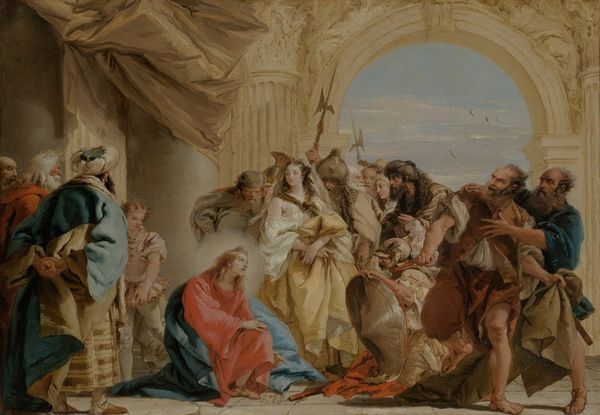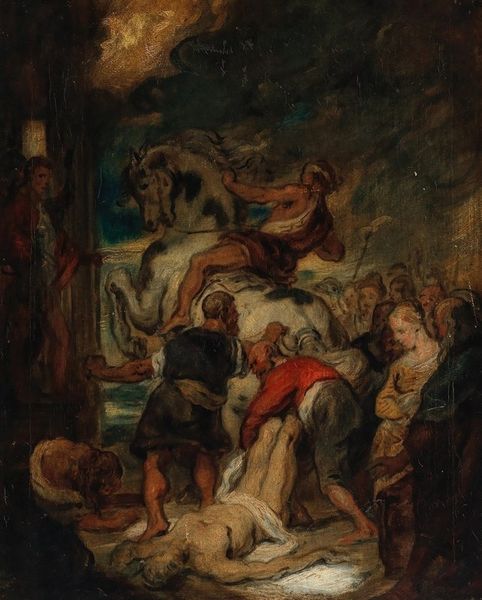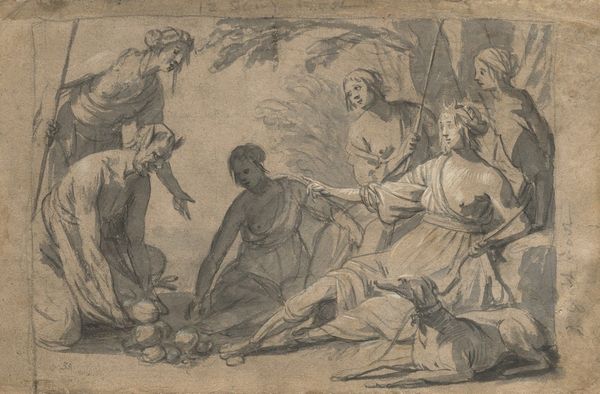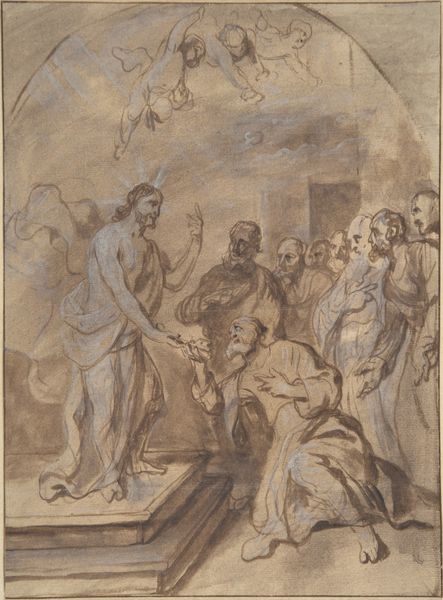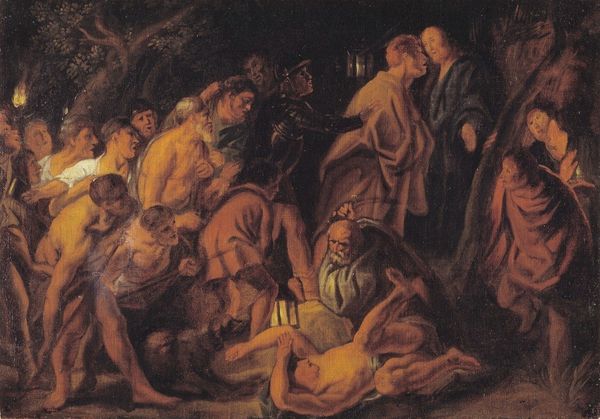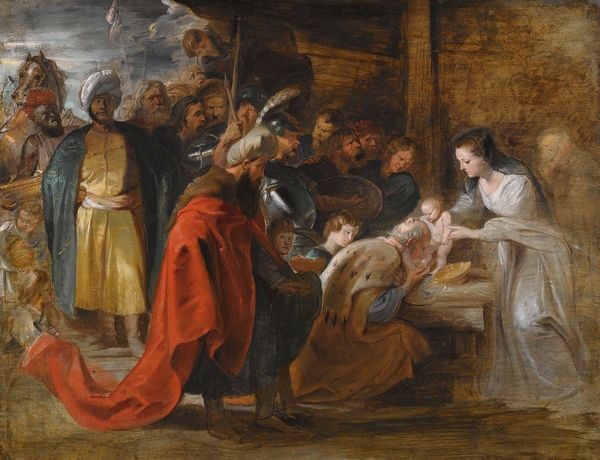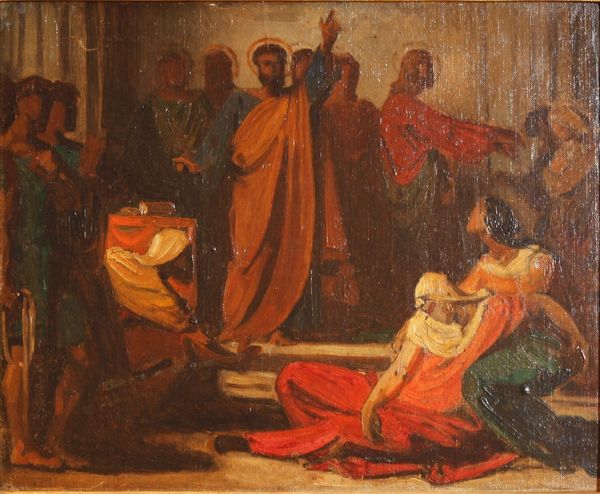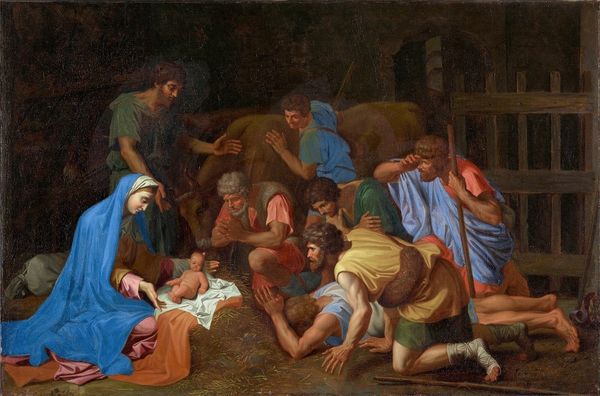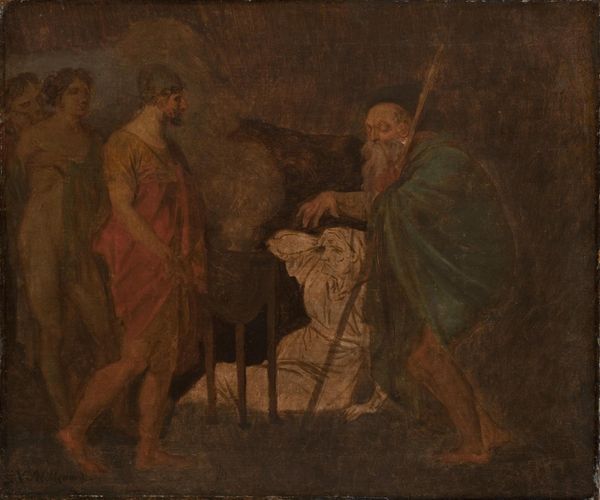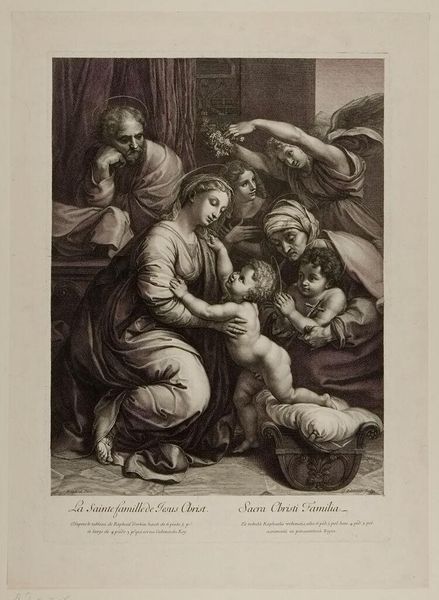
drawing, watercolor
#
drawing
#
narrative-art
#
figuration
#
watercolor
#
romanticism
#
watercolour illustration
#
genre-painting
#
watercolor
Copyright: Public Domain: Artvee
Curator: The light in this watercolour is captivating, almost ethereal. I get a distinct sense of tenderness mixed with… something not quite settled. Editor: Well, "Suffer the Little Children" certainly packs a visual punch, doesn't it? Even though we don’t know precisely when Thomas Sully created it, it’s a work deeply rooted in his interests. Genre-painting—showing scenes of everyday life—was a popular mode in Sully’s era. And as we can see in the subject here, biblical scenes also often made it into art institutions and popular art of the 18th and 19th centuries. Curator: It’s that classic Romanticism touch. Everything blurs, softened edges and colours, suggesting not a depiction of reality but of sentiment… but not completely. The way he captures the movement—gestures and figures dissolving in soft washes —it pulls at you. Does it pull at you? Editor: It makes me consider the audience that would have consumed and contemplated imagery of this type in public spaces and homes. The artist and public shared the context, which surely included theological elements but extended also to sentimental familial interactions. A biblical representation could also offer guidance or justification for approaches to governance. Curator: A mirror to their own time through this lens, huh? Maybe that's why that sense of unease hits me—a collision of intimate domesticity colliding with potential grand political theater. And notice how the colour directs us—the reds grounding Christ figure yet pulling us forward toward that huddle of earth tones in the middle. It is quite emotionally charged. Editor: The composition stages an almost theatrical event that allows viewers to locate themselves and perhaps reflect on society around them, including what it should value in religious practice and in civil governance. Sully made a career examining such visual codes, with important institutional effect. Curator: But on a human level? The sheer vulnerability of that child being brought forward… it cuts across history, you know? It resonates in our chaotic world now as much as ever, and likely spoke just as viscerally to people back then too. Editor: Absolutely. Sully uses the visual vernacular to offer the art viewing public not just aesthetic consumption, but a type of citizenly training. The fact that his career extended as far as it did suggests how crucial such works must have seemed at the time. Curator: Citizenly training, that’s clever. I just keep circling back to the emotional immediacy. The beauty and sorrow all at once. Editor: That enduring resonance is why Sully and his art retain its potency even today.
Comments
No comments
Be the first to comment and join the conversation on the ultimate creative platform.
